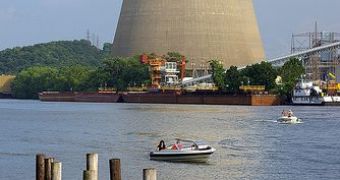Paradoxically, fish that live near coal-fired power plants have lower levels of mercury than fish that live further away, concluded a new study carried out by North Carolina State University.
Normally, coal-fired power plants are the main source of mercury air pollution on a global scale, but this new discovery seems to have something to do with higher levels of selenium, another chemical found near such power plants which seems to have its own health issues.
The researchers got to these conclusions after analyzing largemouth bass and bluegill from 14 freshwater lakes: 7 within a 10 km range of a plant and 7 located at minimum 30 km of a plant.
As these are the species most commonly caught and eaten by occasional anglers and they also are in two different places in the food chain, they were the perfect populations to examine.
Largemouth bass are top predators at the top of the food chain and since mercury builds up in the food chain, scientists expected them to have higher levels of mercury.
As for bluegill, the situation is completely opposite – they eat invertebrates like insects, so they would be expected to have lower levels of mercury.
After examining these two species, the scientists found that there place in the food chain was irrelevant for mercury levels, instead their location made the whole difference: fish from lakes further from the power plants had mercury levels three times higher than those living in lakes closer to power plants.
"We found that fish in lakes located at least 30 kilometers (km) from a coal-fired power plant had mercury levels more than three times higher than fish of the same species in lakes that are within 10 km of a plant," says Dana Sackett, lead author of a paper describing the study and a PhD student at NC State.
Mercury is a very toxic chemical that builds up in fish tissues and can be dangerous for people consuming that fish.
After looking for a reasonable explanation, the researchers found that there might be a link between mercury levels and selenium.
Power plants are expected to have an important amount of mercury within 10 km of the smokestacks, but selenium, which is also emitted by power plants, counters mercury, through still uncertain mechanisms.
Otherwise said, selenium keeps fish from gathering high mercury levels, only we don't know exactly how.
Lower mercury levels are a good thing but high selenium levels can also cause some issues – fish within 10 km of a power plant had selenium levels 3 times higher than those further away.
“Selenium is an important dietary element, but at high levels, it can have serious consequences – including lethal effects and an array of health problems for fish and wildlife,” says Dr. Derek Aday, associate professor of biology at NC State and a co-author of the paper.
“This information will inform health and wildlife officials who make determinations about fish consumption advisories and wildlife management decisions,” added Dana Sackett.
The findings will be published in the next issue of the journal Ecotoxicology.

 14 DAY TRIAL //
14 DAY TRIAL //